In Part 6, we will explain the points to consider when selecting an FPGA power supply from the perspective of the FPGA power supply specifications.
Continuing from last time, this time we will take a look at "Cyclone V (5CSXFC5D)" as an example.
Point 1: Understand the FPGA power specifications
Check FPGA power supply specifications
- Check Power Supply Sharing Guide Lines on Pin Connection Guide Lines to verify voltage and accuracy
- Check core (VCC, etc.) voltage and voltage accuracy
- Check the voltage and voltage accuracy of PLL (VCCA_FPLL, etc.)
- Check IO voltage and voltage accuracy
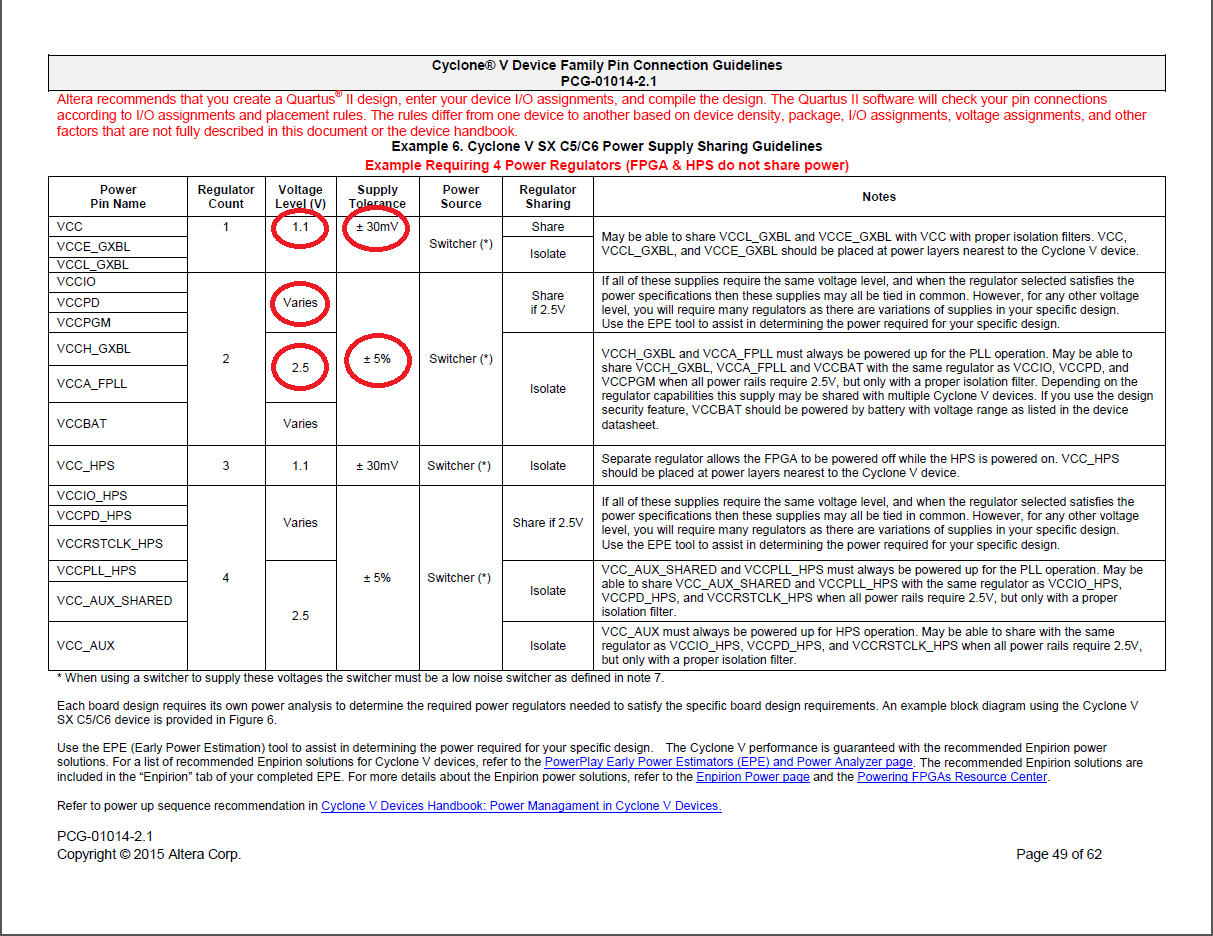
Point 2: Voltage range and accuracy
Check the actual voltage range and accuracy of various power lines. In our Cyclone V SX case, VCC requires a voltage of 1.1V with a range of ±30mV.
Check the numbers for both units
- VCC voltage range is 1.07V to 1.13V, ±2.72% fluctuation range when centered at 1.1V
- The voltage range of VCCA_FPLL is 2.375V to 2.625V, ±5% fluctuation range when centered at 2.5V.
- IO voltage range is 1.71V to 1.89V, ±5% fluctuation range when centered at 1.8V
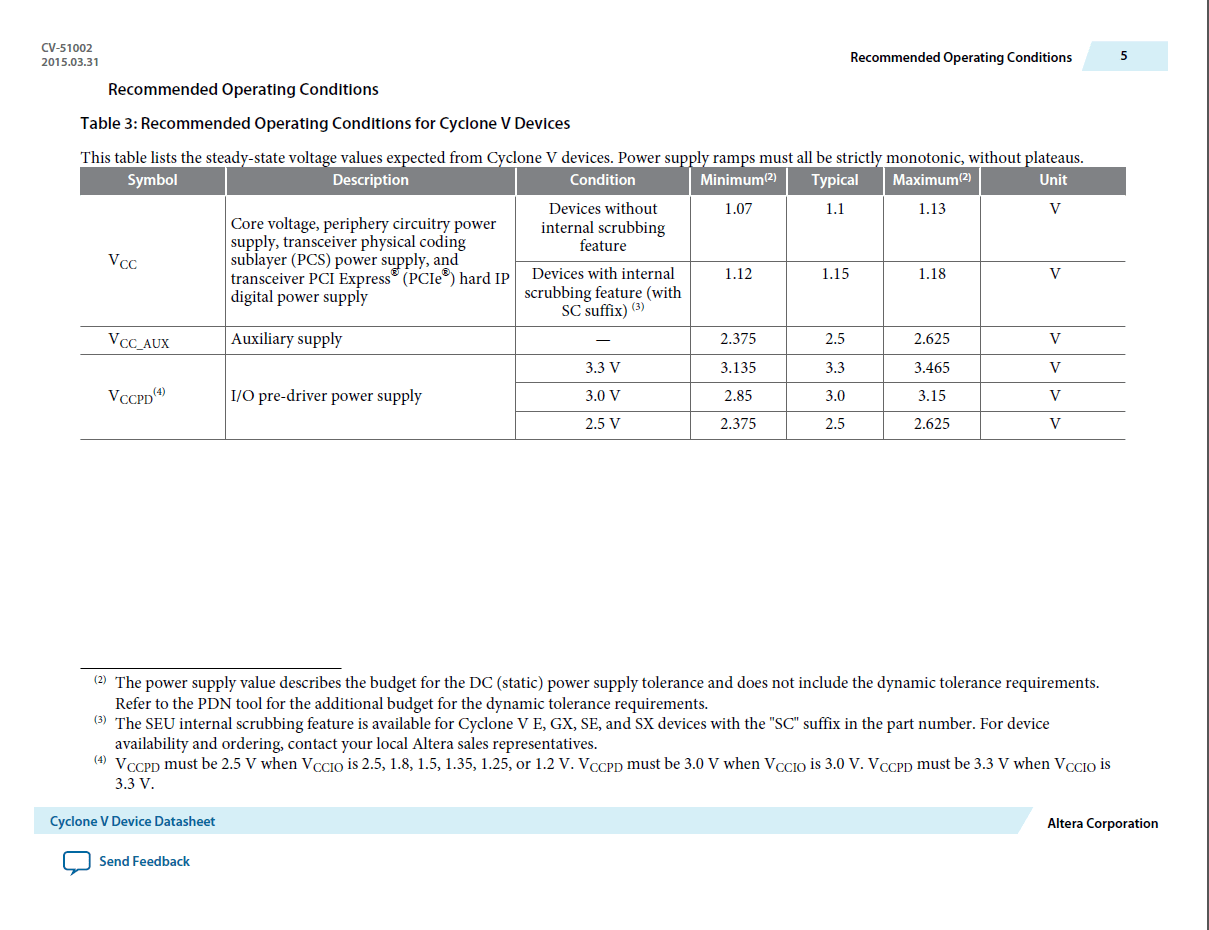
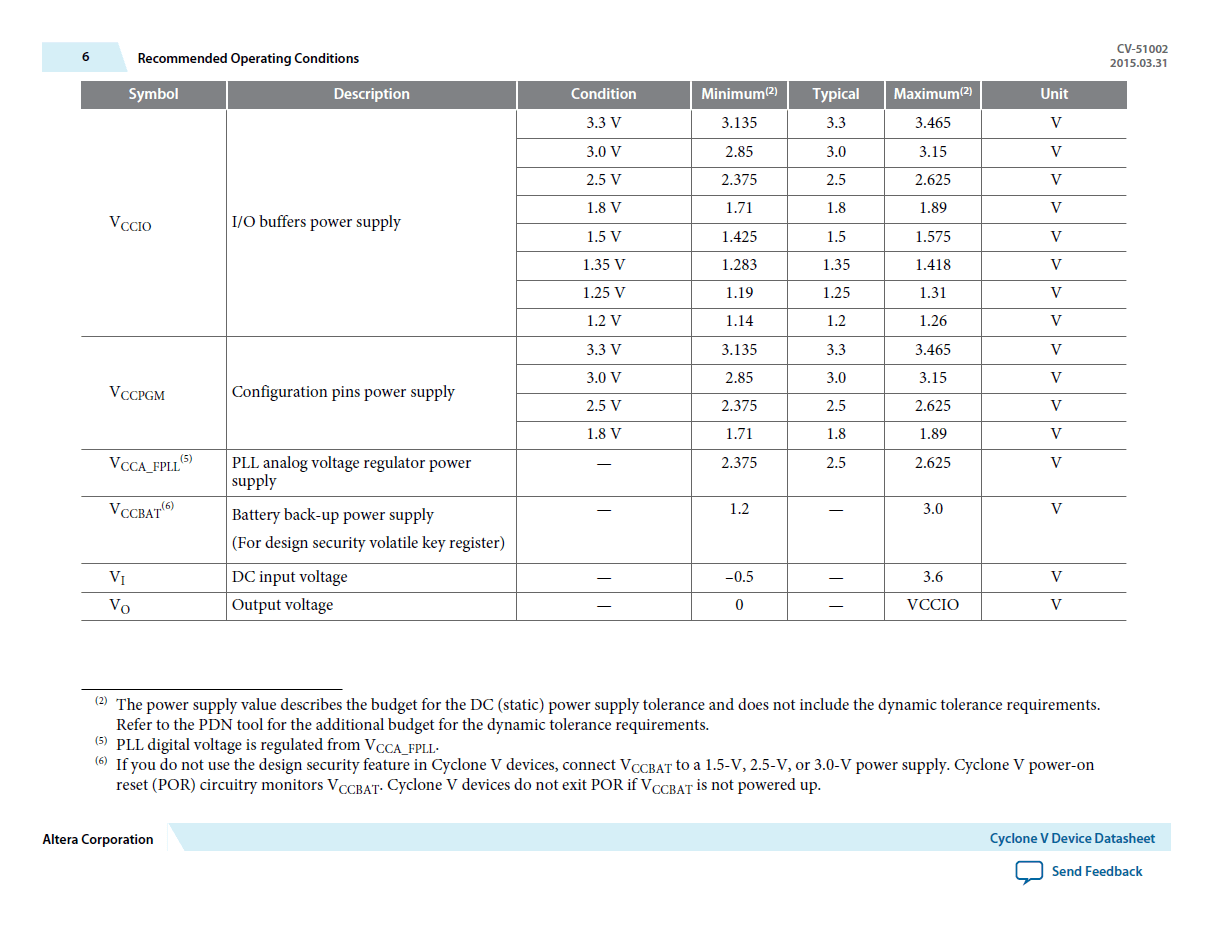
Point 3: Select the supply current with a margin for the estimated current value.
(*For EPE, +30% is the default value.)
Point 4: Transient response (transient, PDN specifications)
Apart from point 2, another fluctuation range is specified for sudden voltage fluctuations. Check the Allowable Ripple for each device in the PDN tool's Introduction sheet, as the values vary depending on the device.
(In this case: 5%)
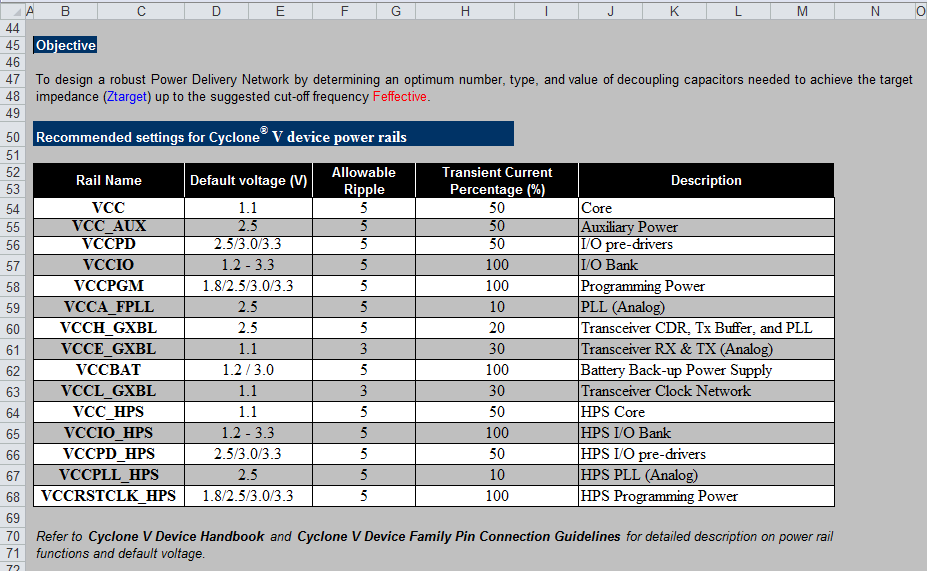
Point 5: Check the FPGA startup sequence
Refer to the Power-Up Sequence in the device handbook, as the startup sequence may be specified for each device.
In the case of this example “Cyclone V SX”, the device handbook
Volume1: Device Interfaces and Integration ⇒ Refer to Power Management in Cyclone V Devices
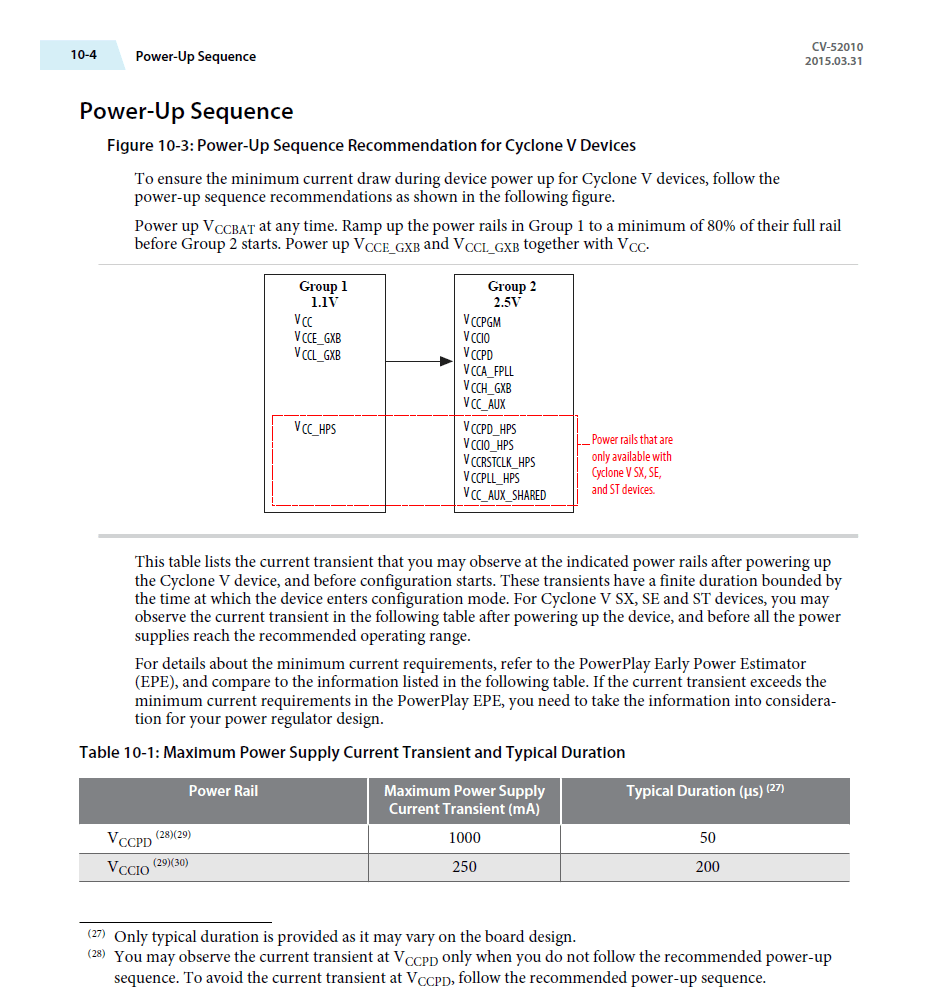
Point 6: Waveform at power startup (monotonic increase)
In the case of this example "Cyclone V SX", it is necessary to raise tRamp in the range of [200usec-100msec] at least.
| Cyclone V Device Datasheet ⇒ Page 7 Electrical Characatrize ⇒ Operating Conditions ⇒ Recommended Operating Conditions |
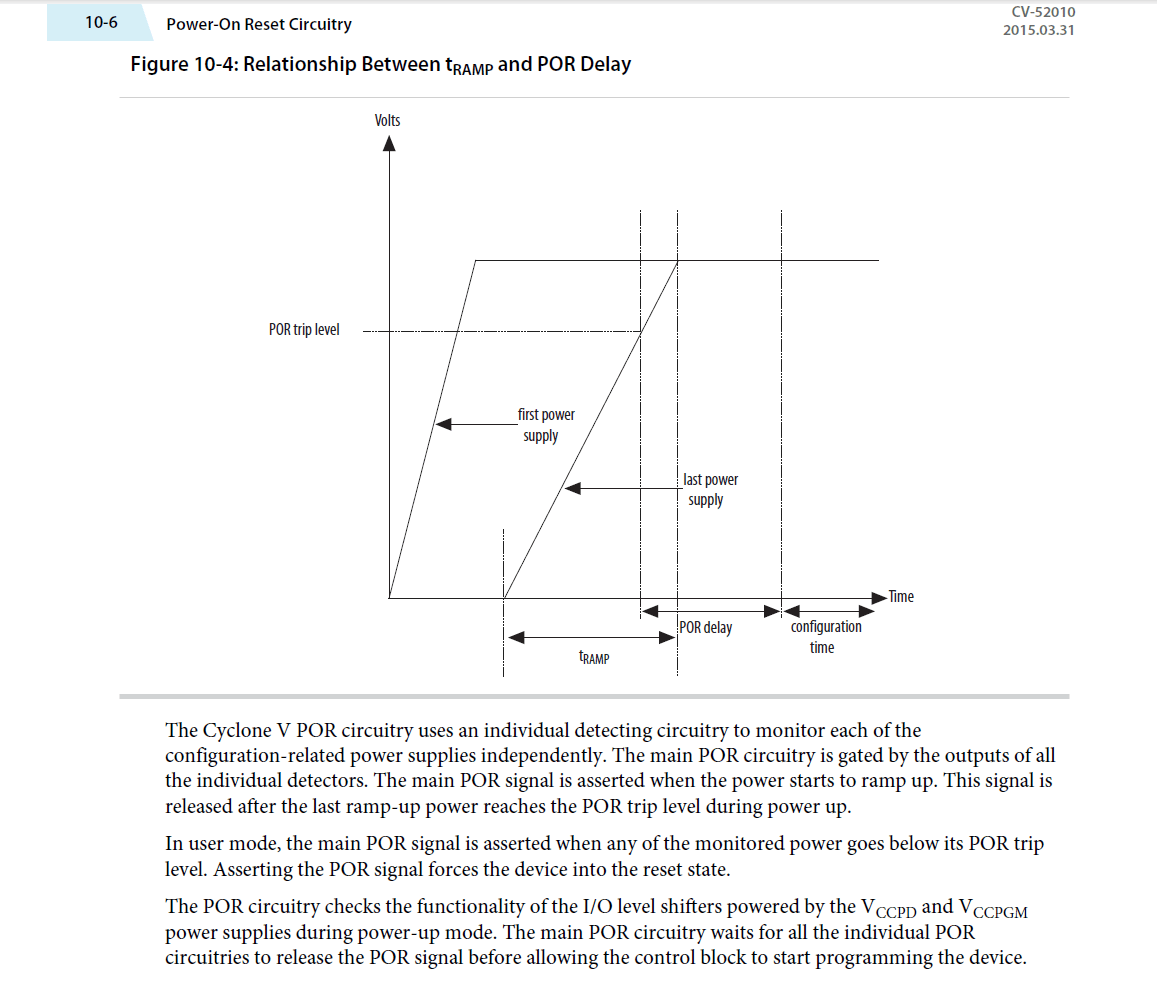
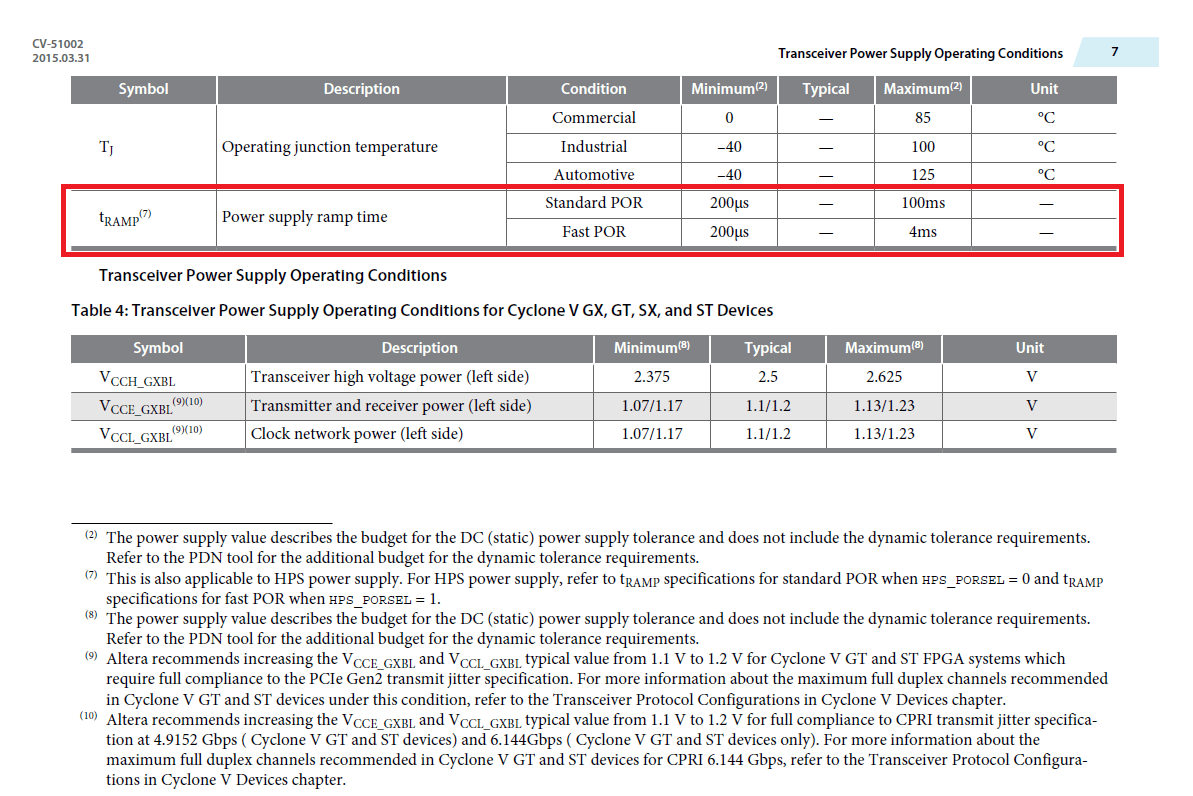
This time, we have explained "Points to note when selecting an FPGA power supply" starting with the FPGA specifications.
